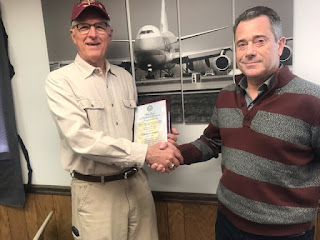March 2010 Hilton Head Accident
14 CFR Part 91: General Aviation
Accident occurred Monday, March 15, 2010 in Hilton Head Island, SC
Probable Cause Approval Date: 06/27/2011
Aircraft: SMITH EDWARD I LANCAIR IV-P, registration: N9JE
Injuries: 1 Fatal, 2 Uninjured.
According to the NTSB's probable cause report, the pilot stated that while in cruise flight he observed the instrument panel begin to vibrate heavily and oil begin to cover the wind screen before hearing a loud "bang." The engine then lost power as oil continued to obscure the wind screen. The pilot had no forward visibility and could not maintain the airplane's altitude. He elected to make an emergency landing on a nearby beach and during the landing the airplane struck and killed a pedestrian. Examination of the airplane revealed that the propeller assembly separated from the crankshaft and was missing. The propeller assembly and propeller flange were not recovered.
An examination by the NTSB Materials Laboratory of the crankshaft revealed that the aft face of the fracture contained crack arrest marks. The fracture of the crankshaft was caused by multiple-origin fatigue cracks that emanated at the aft relief radius for the propeller flange. The records for this engine and airplane do not show an entry of a propeller strike. However, multiple-origin fatigue cracks that extend nearly 50% around the circumference of the aft relief radius for the propeller flange suggest that the propeller had struck an object prior to fracture of the crankshaft. In the absence of material anomalies, the fatigue cracking appears likely to have been caused by external impact stress, such as a propeller strike.
The National Transportation Safety Board determines the probable cause(s) of this accident to be a loss of engine power due to the failure of the crankshaft as a result of a previously undocumented propeller strike.
The engine was disassembled and inspected by a Teledyne Continental Motors (TCM) investigator with FAA oversight. No anomalies were noted within the engine assembly. TCM found evidence of fatigue cracking on the fracture face of the crankshaft. At the request of the NTSB Materials Laboratory, TCM made a cut through the main journal portion in an area located approximately two inches aft of the fracture. The two-inch segment was shipped to the NTSB Materials Laboratory for further examination.
An examination by the NTSB Materials Laboratory of the two-inch segment of the crankshaft revealed that the aft face of the fracture contained crack arrest marks. The aft relief radius for the propeller flange contained no evidence of mechanical damage, such as gouge marks. The fatigue crack propagated through the full thickness of the wall of the crankshaft, and extended around approximately 50 percent of the crankshaft circumference. The remaining portion of the fracture face contained a rough texture consistent with overstress separation.
A review of the engine logbooks dating back to September 13, 1996, revealed that the engine was installed on a Piper Malibu, N70DL, serial number 46-8608001, and did not reveal any anomalies that would have been contributing to the fatigue crack. The last entry dated July 28, 1998, at a Hobbs time of 1806.6 hours for aircraft N70DL revealed that an oil and filter change was conducted. There were no entries for this engine for the next four years. A review of the propeller and aircraft logbook entries also did not reveal any anomalies that would have contributed to the fatigue crack. On May 31, 2002, the records revealed that the engine was disassembled, cleaned, and inspected to check for corrosion and overall condition. New exhaust guides were installed; the valves and seats were ground, the cylinders were oversized and new piston rings were installed. The engine was reassembled using parts that were supplied on a work order in accordance with data approved by or acceptable to the FAA. The engine was run in a test cell and returned to service. The engine was then stored for approximately seven years. After the engine was purchased by the new owner, a logbook entry revealed that the engine was converted from a model TSIO-550-C to a model TSIO-550-B in accordance with Continental Service Bulletin M75-6, REV. 1, and dated 6/4/1975. The conversion was completed by the owner/mechanic on January 15, 2009, installed and returned to service after a 100-hour inspection. The engine accumulated 99 hours since it was converted and installed on the current airplane.

